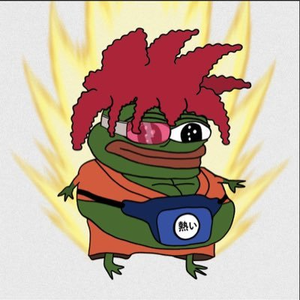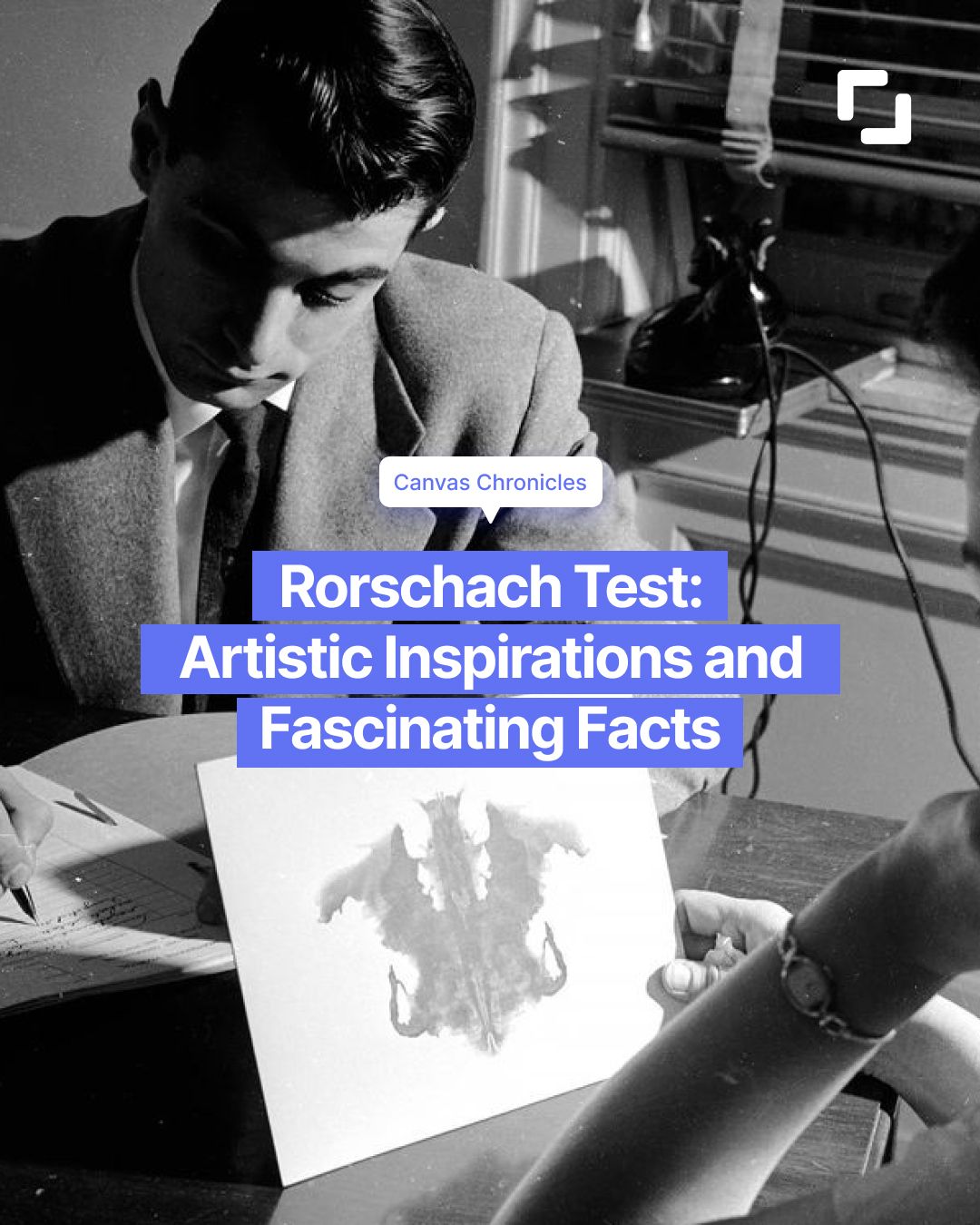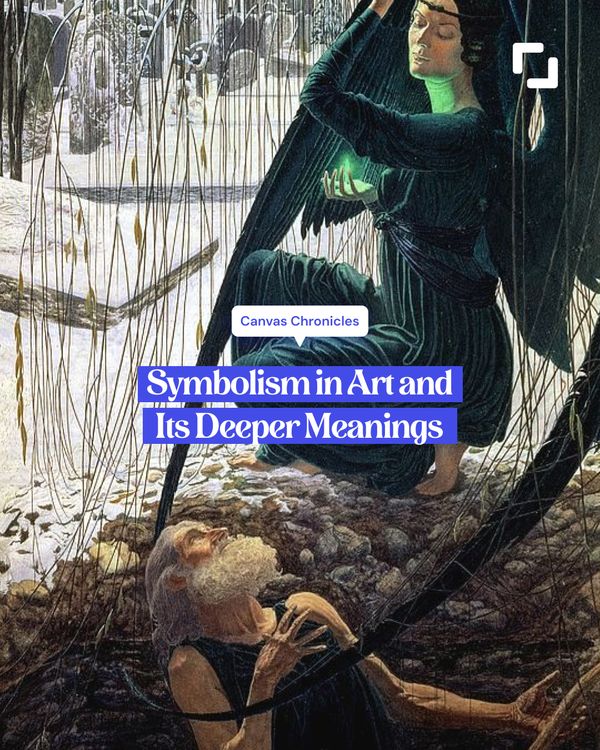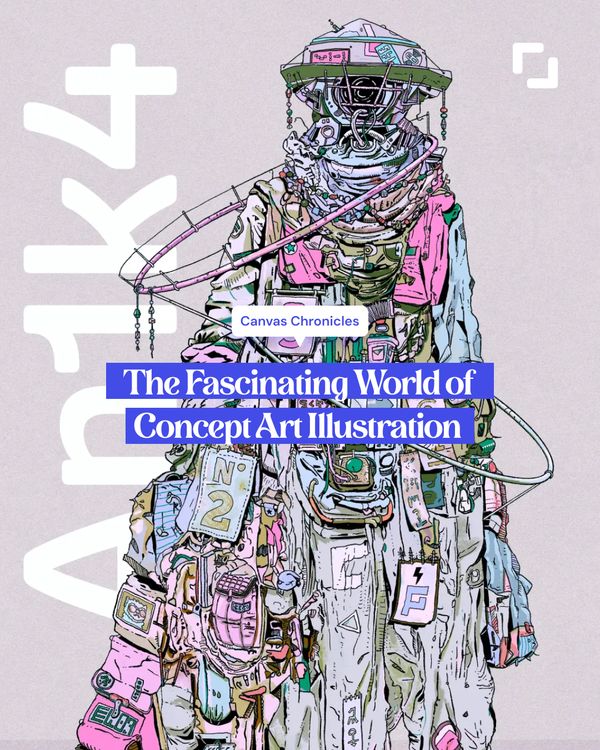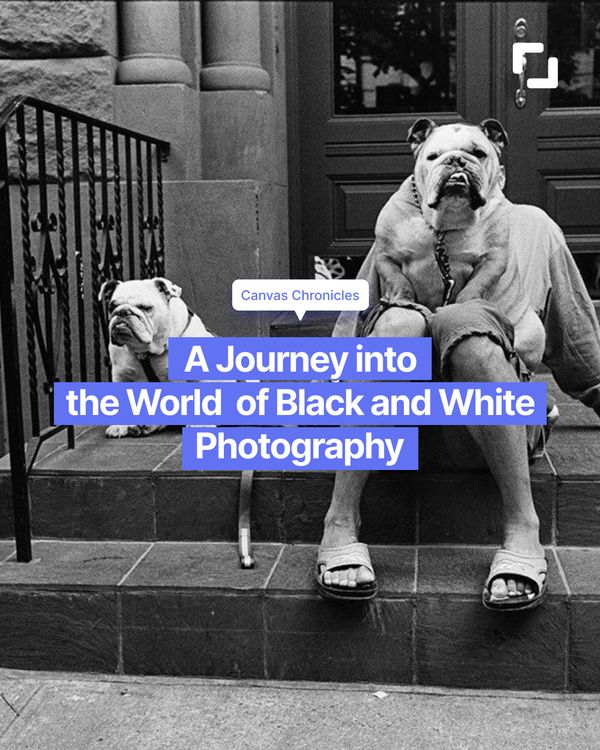The Rorschach test, a psychological evaluation method created by Swiss psychiatrist Hermann Rorschach in the early 20th century, has intrigued both psychologists and artists alike. This captivating inkblot test remains a subject of fascination due to its enigmatic nature and the unique insights it provides into the human psyche. Beyond its psychological applications, the Rorschach test has also inspired prominent artists, and its influence can be seen in various art forms.
In this article, we will delve into the origins and workings of the Rorschach test, explore its impact on the art world, discuss the artists who have drawn inspiration from it, and unveil intriguing facts surrounding this iconic psychological evaluation.
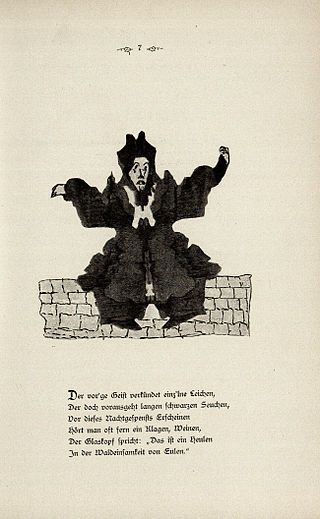
The history of the inkblots
Klecksography is a fascinating and imaginative art form that involves creating abstract images through the technique of inkblot painting. The word "Klecksography" is derived from the German word "Klecksen," meaning "to splatter" or "to spot." The art form gained popularity in the early 20th century, and its most famous proponent was the Swiss psychiatrist and psychoanalyst Hermann Rorschach, who used inkblots as a psychological tool to assess a person's personality and emotions through their interpretations of the images.
The work was pioneered by Justinus Kerner, who included klecksographs in his books of poetry.
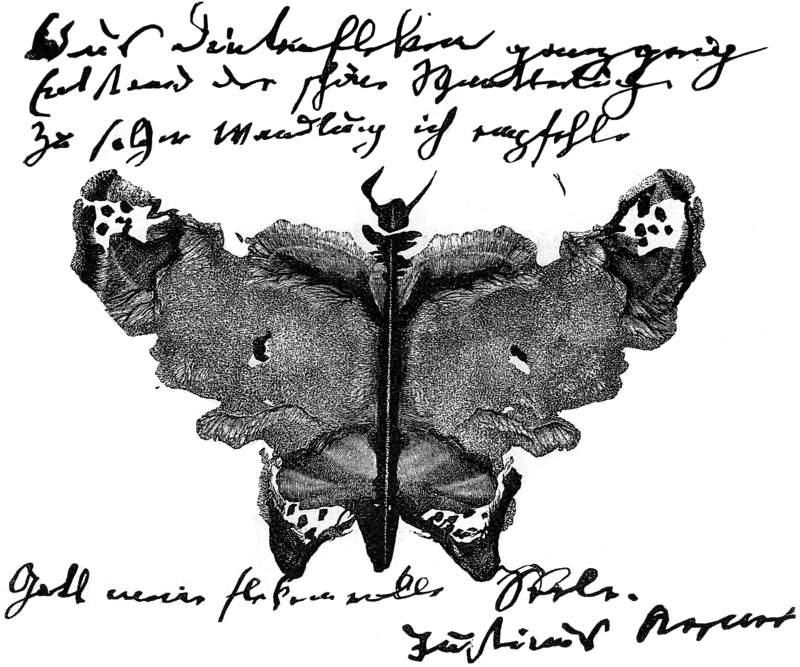
The Rorschach Test: A Psychological Enigma
The Rorschach test, also known as the Rorschach inkblot test, is a projective psychological test in which subjects are asked to interpret a series of ten abstract inkblots. The responses are then analyzed to gain insight into the individual's personality, emotions, and thought processes. Hermann Rorschach first introduced the test in 1921, and it remains one of the most widely used and debated psychological assessments to date.
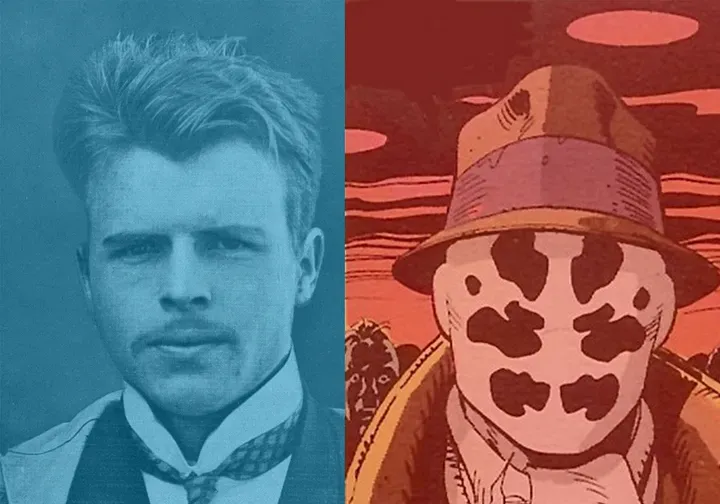
Artistic Inspirations from the Rorschach Test
The Rorschach test's abstract nature has significantly influenced artists, sparking their creativity and inspiring new artistic approaches. Many artists have found inspiration in the inkblot images, which offer a sense of ambiguity and open interpretation. Abstract expressionists, surrealists, and other avant-garde artists have been particularly drawn to the Rorschach test's enigmatic nature, incorporating inkblot-like patterns into their works.

Important Artists Embracing the Rorschach Test
Among the influential artists who have embraced the Rorschach test in their art are:
- Jackson Pollock: The iconic abstract expressionist artist, known for his drip painting technique, drew inspiration from the Rorschach test's inkblot imagery. Pollock's famous "drip paintings" often featured intricate patterns reminiscent of Rorschach's inkblots, inviting viewers to interpret their meaning.
- Salvador Dalí: The surrealist mastermind, renowned for his dreamlike and surreal imagery, incorporated inkblot-like shapes and patterns into some of his works. Dalí's fascination with the subconscious mind and free association resonated with the essence of the Rorschach test.
- Andy Warhol: The pop art pioneer and cultural icon embraced the Rorschach test's elements of repetition and symmetry in some of his artwork. His silkscreen prints often presented symmetrical patterns, reminiscent of the Rorschach inkblots.
The Most Expensive Artwork Resembling Rorschach Inkblots
In 2017, the most expensive artwork that bore a resemblance to Rorschach inkblots was sold at auction. Gerhard Richter, a renowned German artist, created "Abstraktes Bild" in 1986, a large abstract painting with striking, intricate patterns resembling the famous inkblots. The painting was sold for an astounding $46.5 million, making it one of the most expensive contemporary art pieces ever sold.
Fun Facts about the Rorschach Test
- The Rorschach test was initially met with skepticism in the scientific community, but it gained popularity over time and became a widely used psychological assessment tool.
- Hermann Rorschach originally intended the test to be a tool for diagnosing schizophrenia, but its applications expanded to cover various psychological conditions.
- The Rorschach inkblots are entirely symmetrical, and the blots are created by folding a piece of paper and applying ink to one side, producing a mirrored image.
- In the Rorschach test, the subject's responses are analyzed based on several factors, including location, content, and form, providing a comprehensive understanding of their personality and thought processes.
The Rorschach test's enduring legacy is a testament to its significance in both psychology and the arts. Its ambiguous and evocative inkblot images have inspired artists throughout history, leading to the creation of remarkable artworks by influential figures like Jackson Pollock, Salvador Dalí, and Andy Warhol. Moreover, the intrigue surrounding the Rorschach test has led to its continuous use as a psychological evaluation tool and has shaped our understanding of the complexities of the human mind.
Artwork influenced by the vision of Rorschach
If you wish to engage with us, kindly share on Twitter what you perceive in these artworks created by Pigment.
- Inkblot_05 by Pigment

2. Inkblot_07 by Pigment

3. Inkblot_02 by Pigment

4. Inkblot_09 by Pigment


